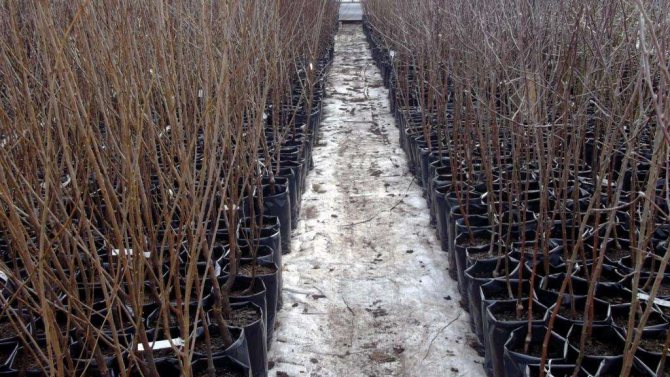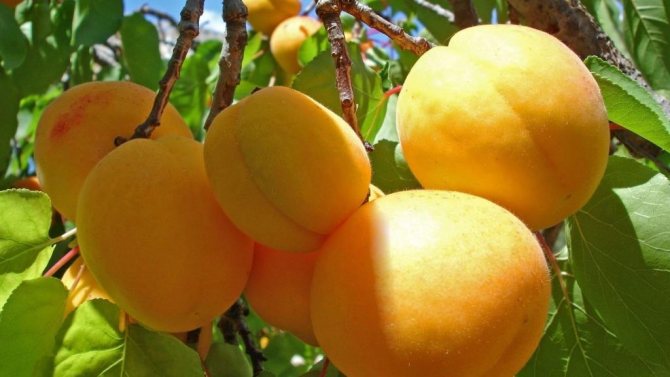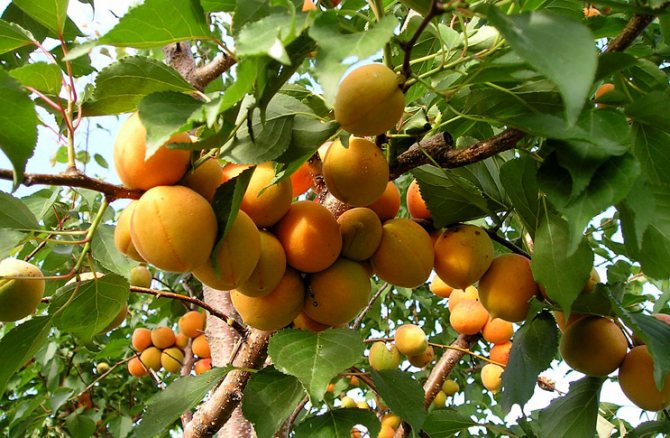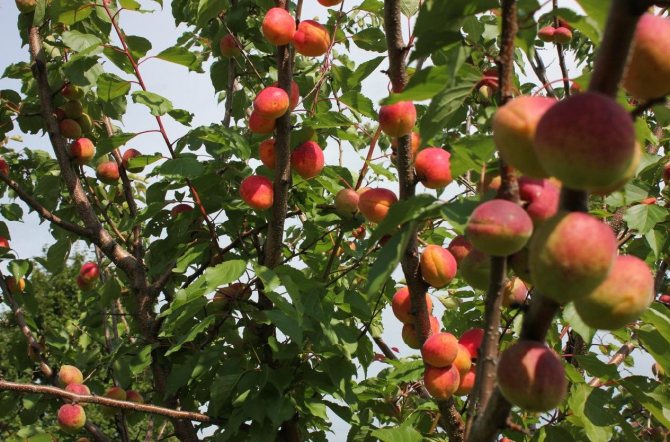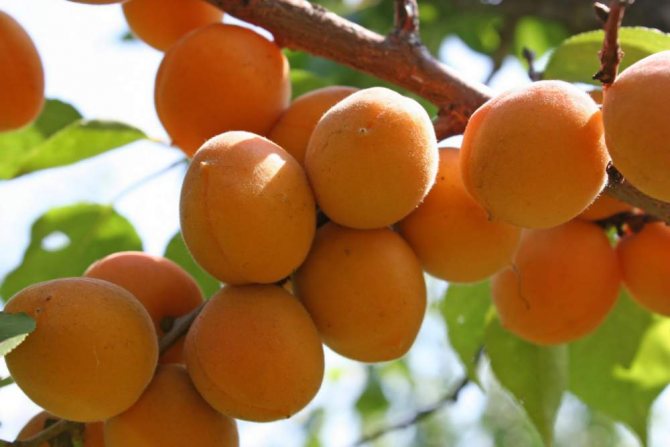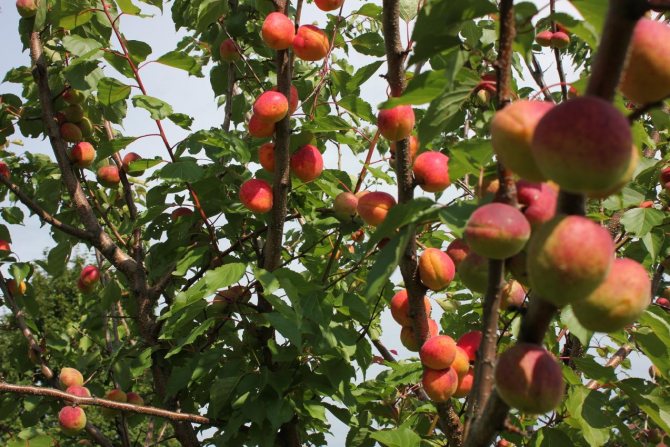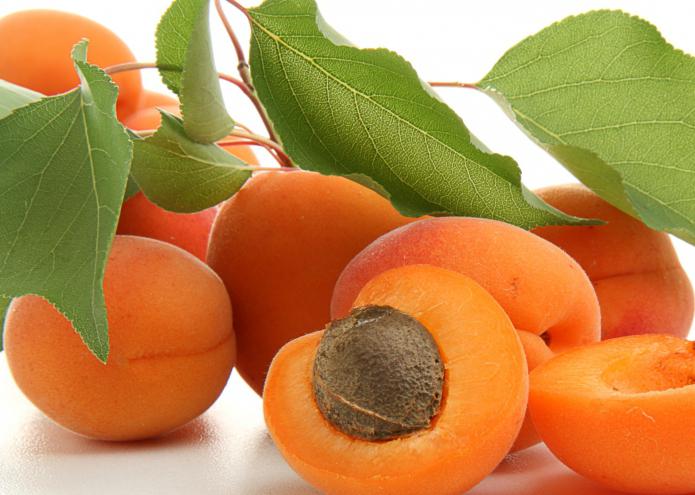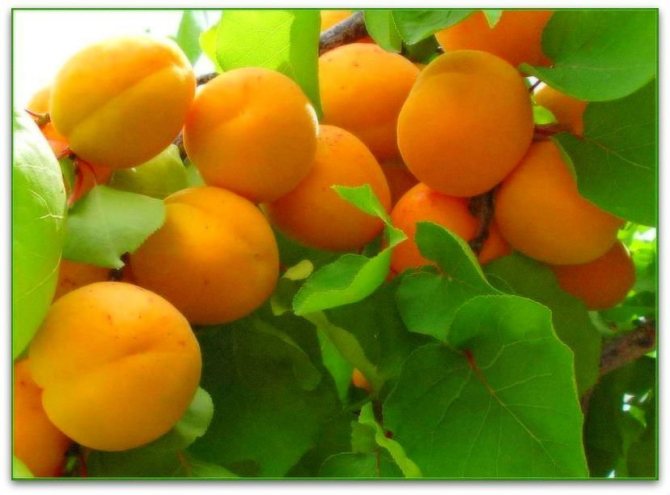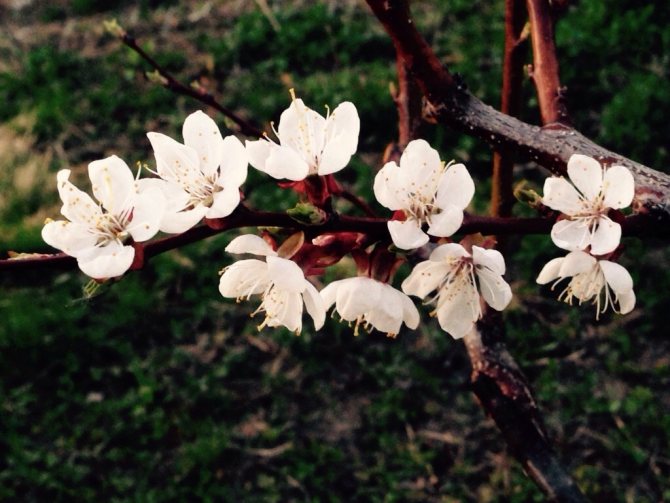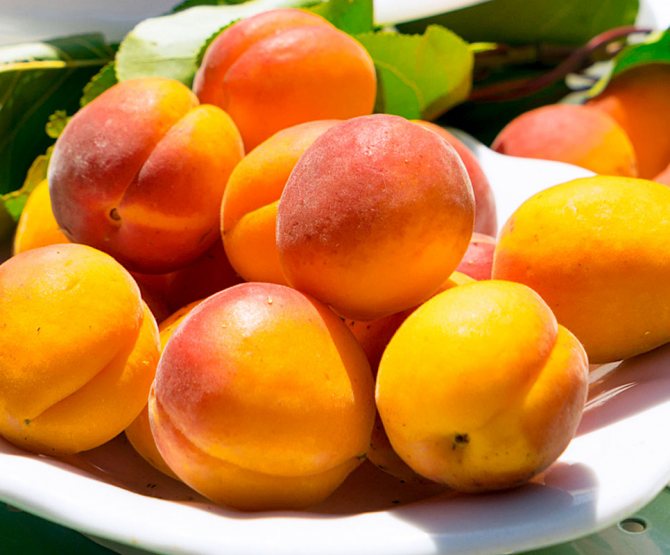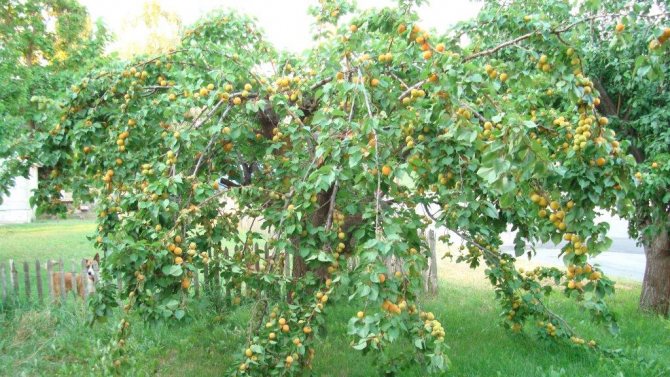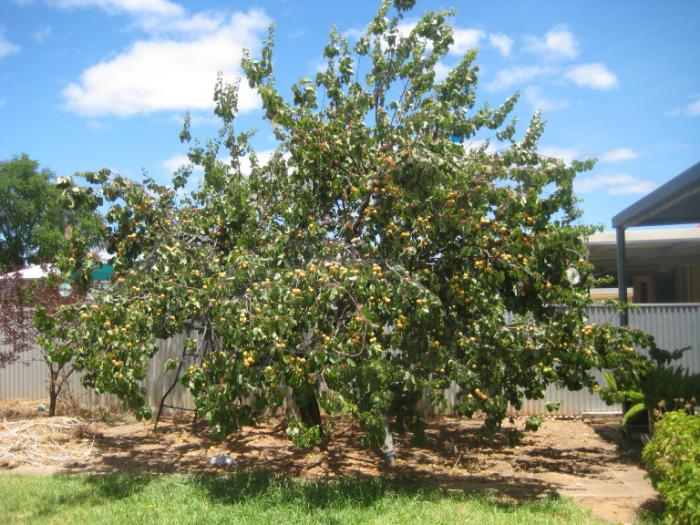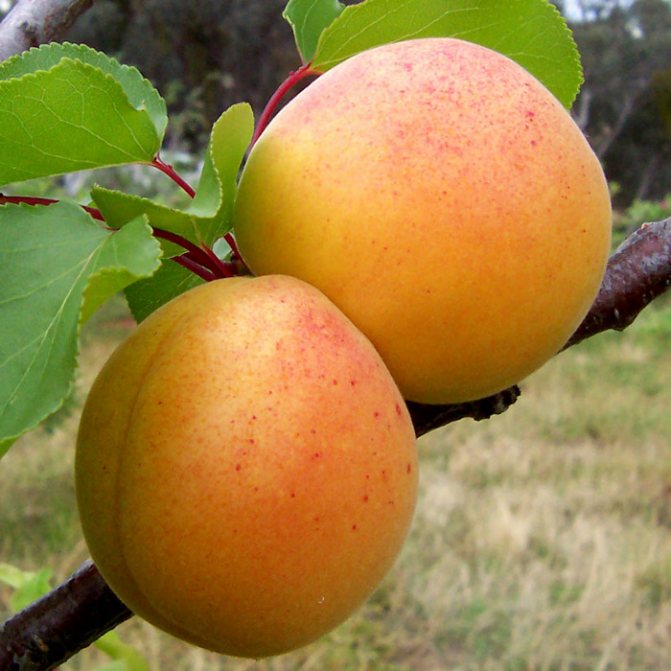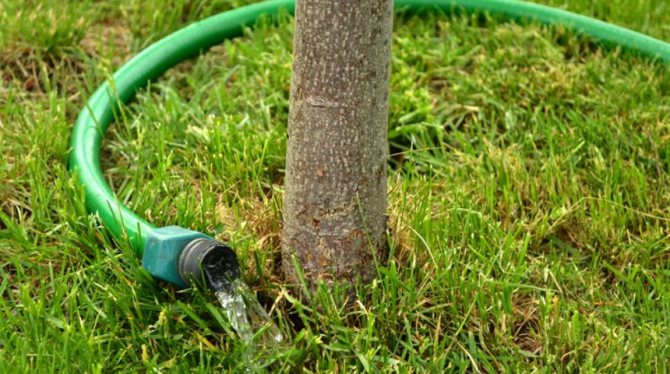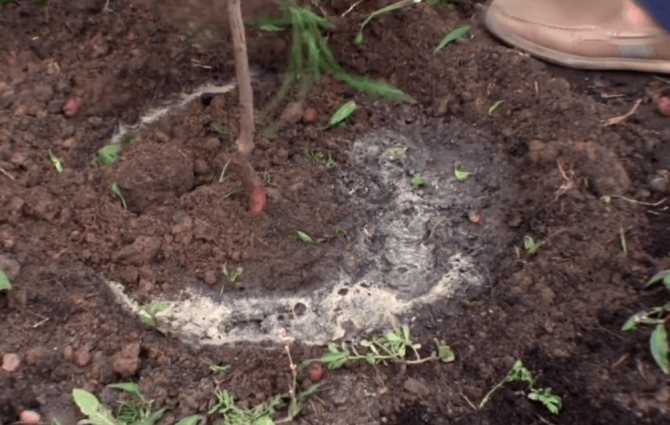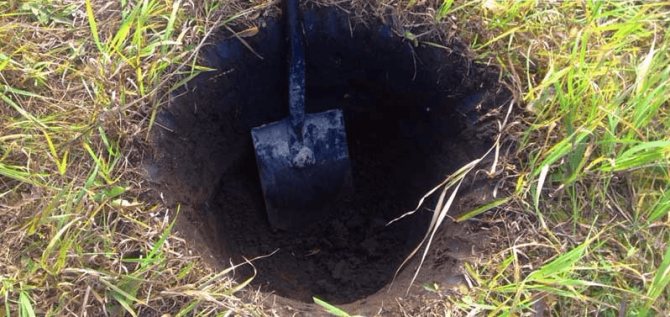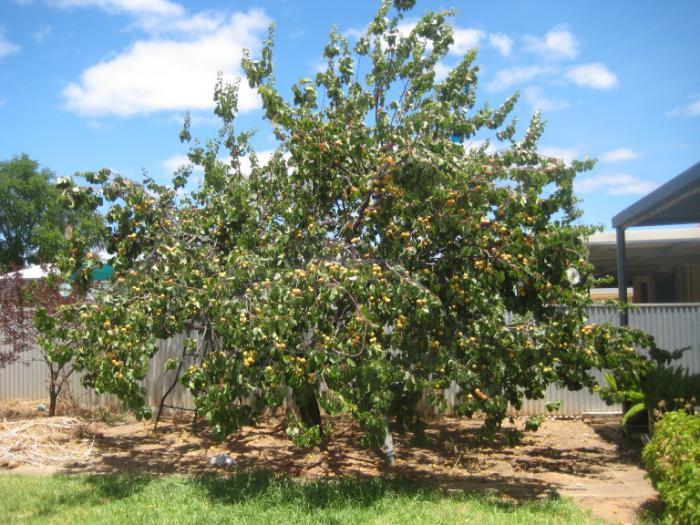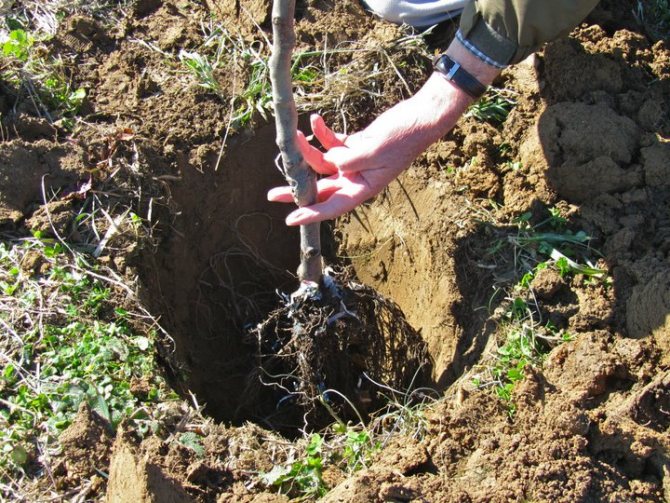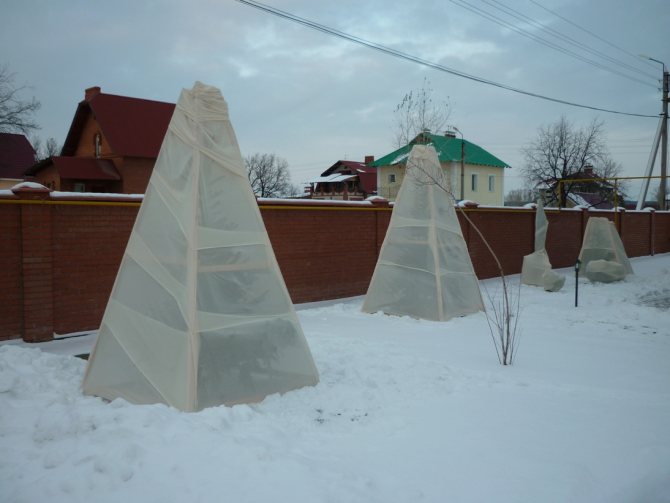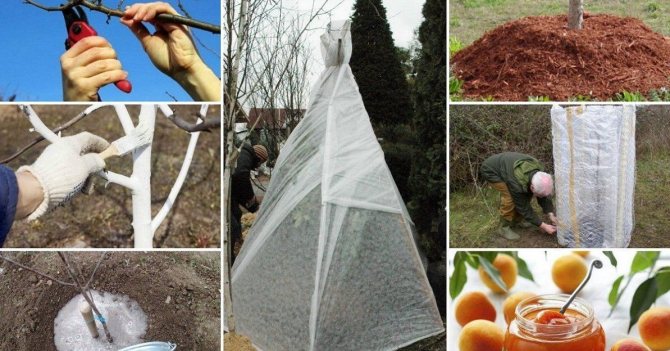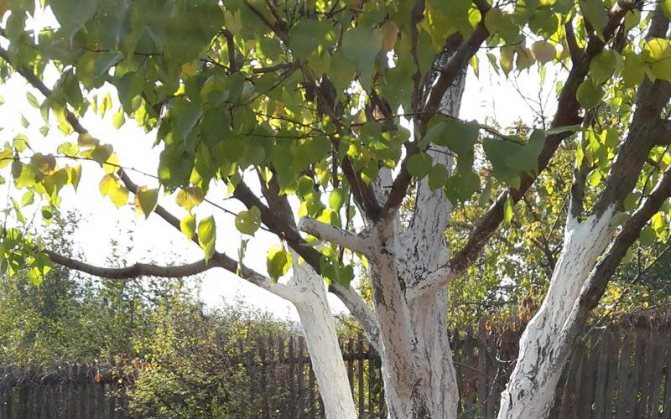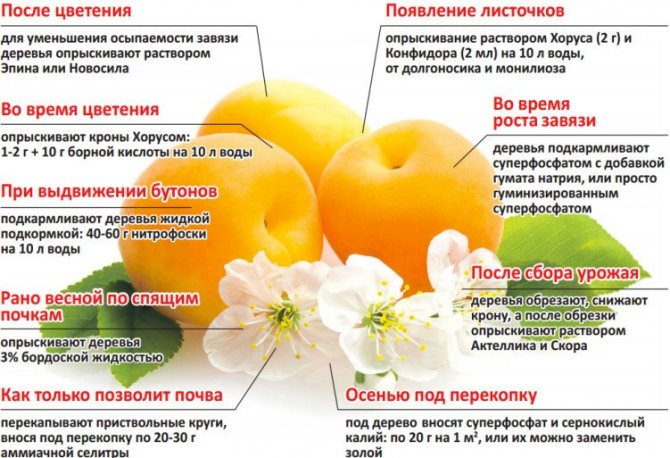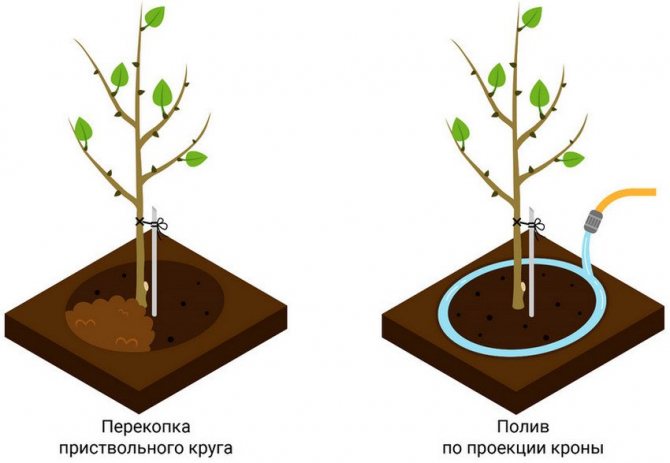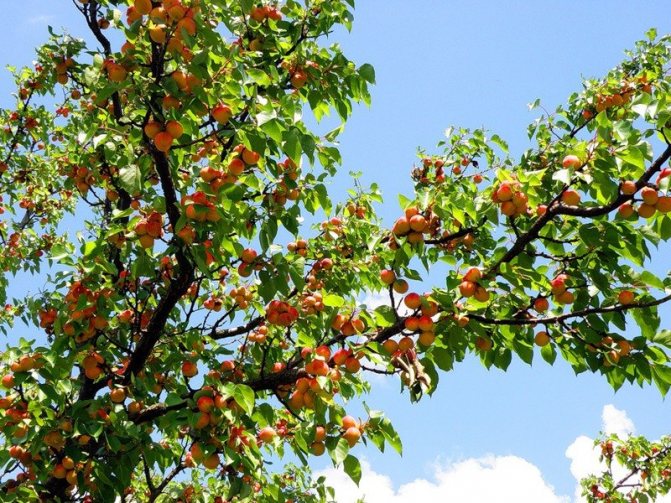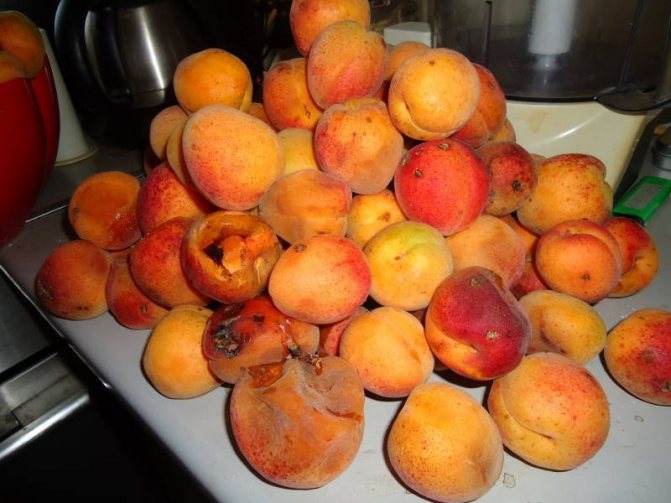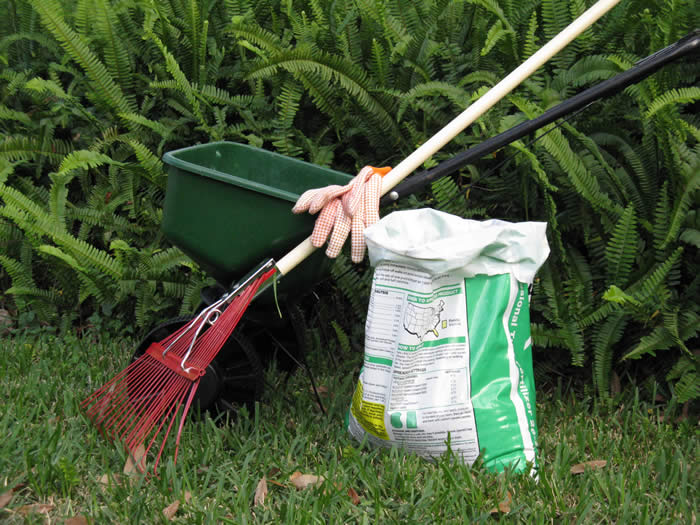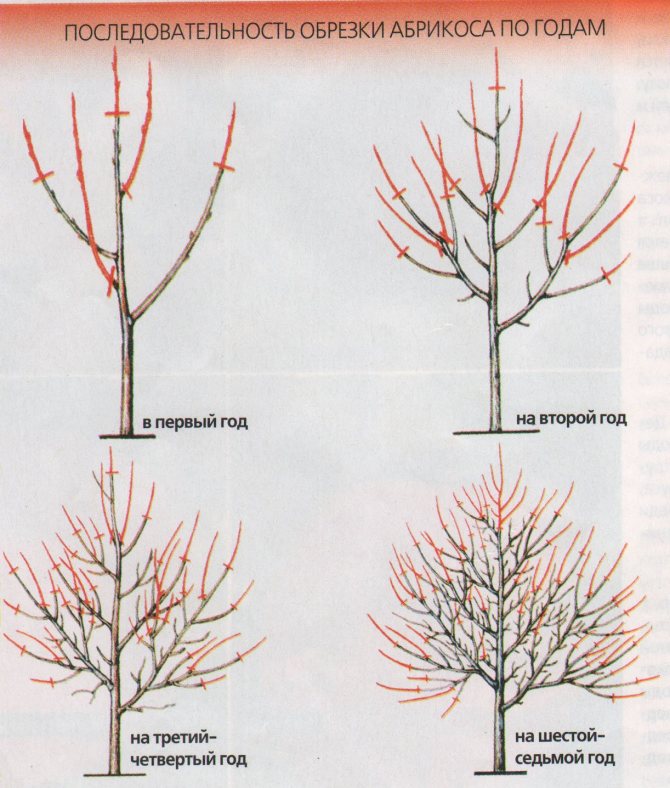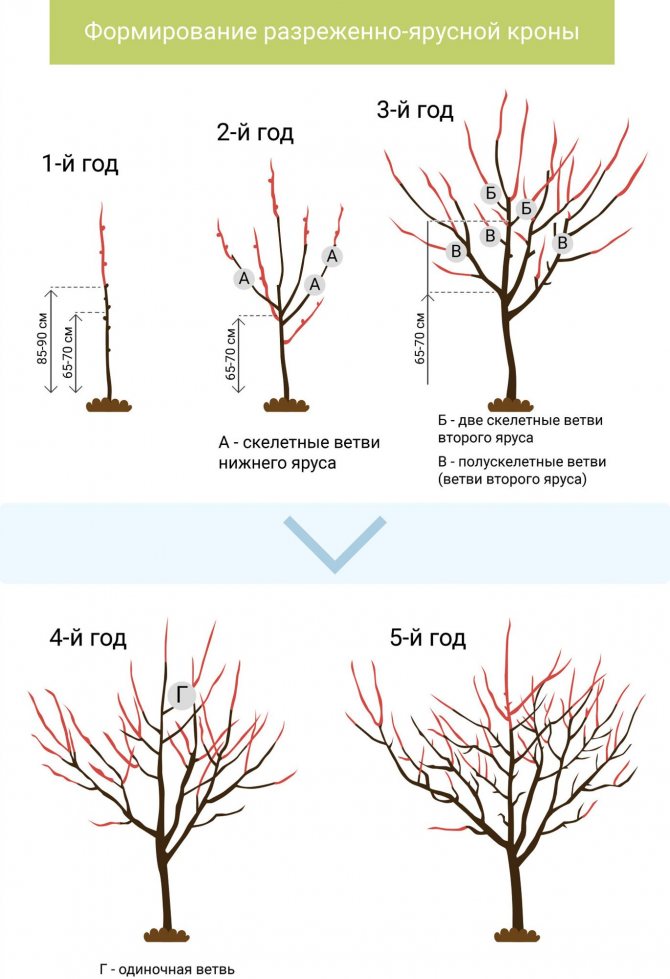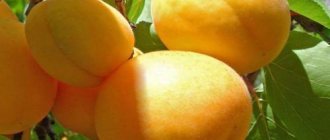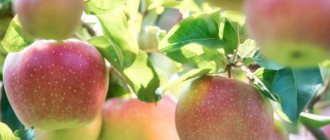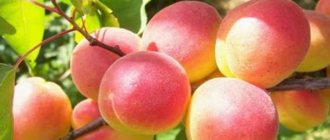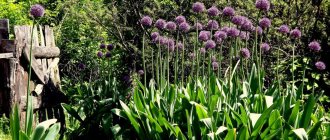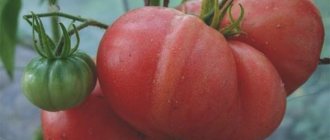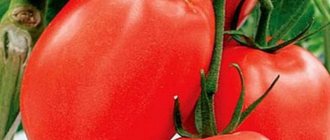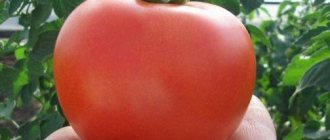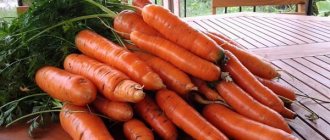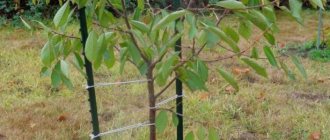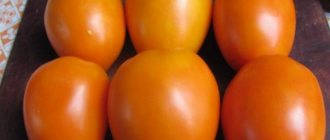Apricot can be most often found in gardens of southern latitudes, since the culture is classified as a thermophilic plant. But thanks to the work of breeders today, it is also possible to grow it, receiving annual harvests, in more severe climatic conditions, choosing specially bred frost-resistant varieties for cultivation. The best hybrids for cold regions include the Northern Triumph apricot.
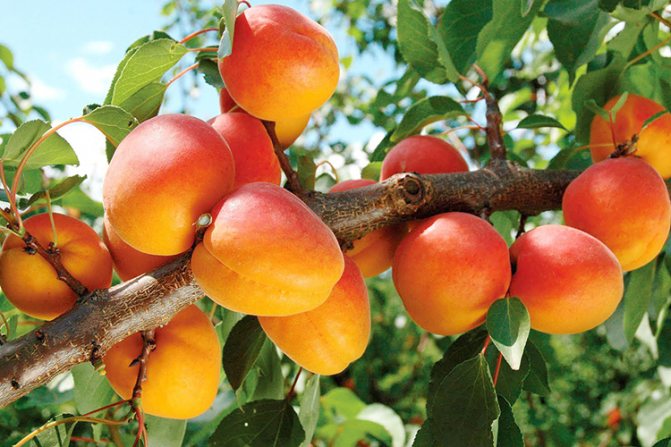
Characteristics of the variety
The height of an adult tree can reach 4 meters, the crown is spreading, with powerful and thick branches located at an angle of 45 degrees to the trunk.
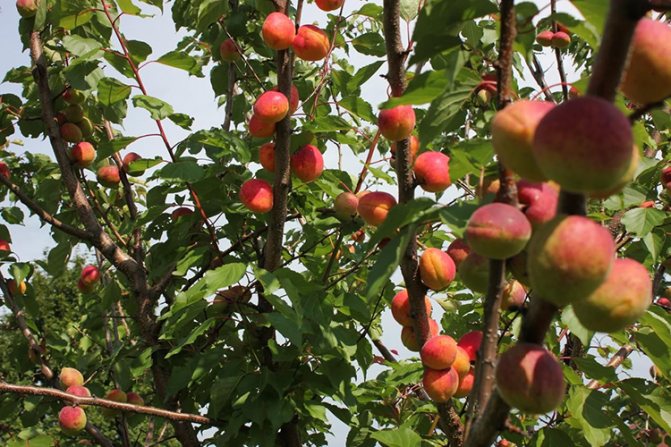

The foliage is large, has a slightly pointed shape with a jagged edge, and is painted in a deep green color. It blooms with white-pink flowers, which have a positive effect on the decorative attractiveness of fruit plantations. The root system deepens into the ground by 40-50 cm.
The Northern Triumph is a self-fertile hybrid, therefore, for fruiting, it does not require the presence of pollinators planted nearby. It enters the flowering phase early, the first fruits can be harvested in July-August. The berries are quite firmly attached to the branches, due to which, when ripe, they do not crumble.
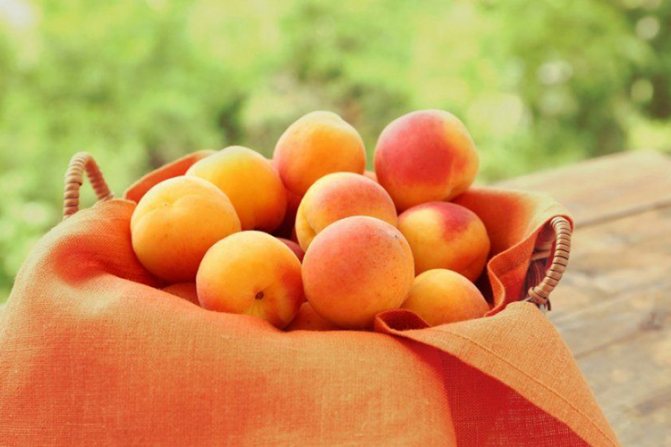

Fruiting in oblong berries, their color can vary from yellow-pink to orange with a red blush. The mass of one fruit will be 30-40 g, competent agricultural technology will increase these indicators to 50-60 g. The skin is medium in density, velvety, with a sour taste, the pulp is juicy and sweet.
Inside there is a large edible bone, in terms of taste it is compared to almonds, in light of which it is used in cooking as a flavoring additive.
The variety is characterized by a high winter hardiness of wood, therefore it remains viable in winter in the north, even when the thermometer marks drop to -35C, while the resistance of flower buds to frost will be less - -28C is considered a critical mark for them.
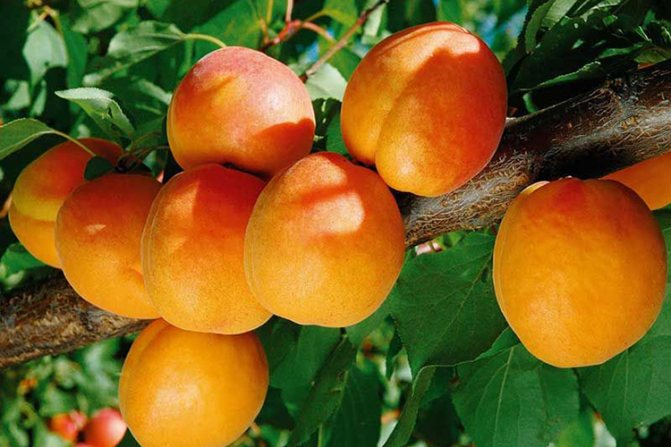

Early maturity is inherent in seedlings, therefore, it will be possible to enjoy the first fruits with proper care already 3-4 years after their rooting in the garden. The peak yield falls on 10-12 years of life, during this period 50-60 kg of apricots can be harvested from one plant. The variety may have failures in fruiting, but timely pruning will help to avoid such problems.
Correct agricultural technology will allow you to have a fruiting culture in the garden for about 35-40 years, the average life of a tree will be 25 years. The berries are distinguished by good transportability, so the hybrid is suitable for growing commercially.
Description of the apricot variety Triumph North
The variety was obtained by crossing two popular varieties: Red-cheeked and Severny early. It was bred by Academician A.N. Venyaminov while working at the V.I. I. V. Michurin. At first, it was planted in the territories of the Central Black Earth Region, but later, showing excellent qualities, it spread throughout central Russia, the Urals and Siberia. Under the right conditions of planting and care, it bears abundant fruit in the Moscow region and the Leningrad region.
Did you know? Apricot pits can be used as an additive to dishes as a substitute for bitter almonds. In addition, marzipans and other desserts are often made from small seeds.
Wood
A powerful, spreading tree quickly grows up to 4-5 meters in height. Thick skeletal branches are located at an angle of 45 ° to the trunk. The branching is average. The leaves are bright green, large, with a wavy edge and a sharp tip. White flowers with pink veins give the tree a high decorative effect during flowering.
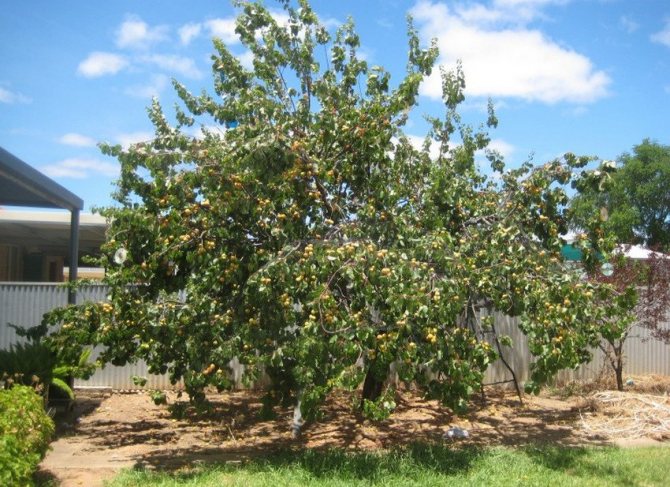

Fruit
The weight of densely growing pubescent fruits can range from 25 to 50 g, depending on the care and agricultural technology. The skin of the berry is velvety, orange, with a speckled blush on the sunny side. The pulp is sweet with sourness, aromatic. The seeds are easily separated, their kernels are edible and have a pleasant almond flavor without bitterness.
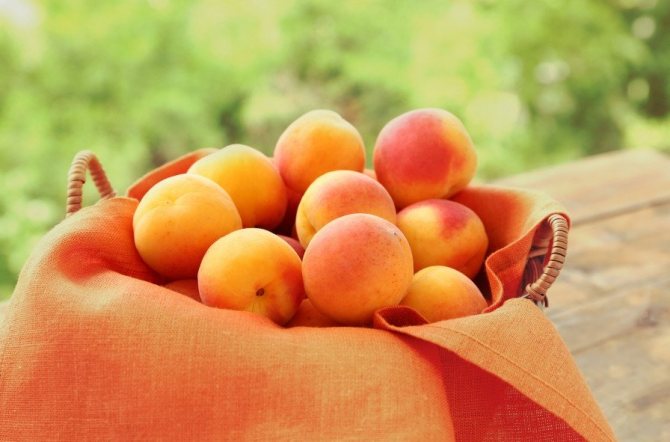

The tasting score ranges from 4.2 to 5 points.
Landing
In order for a fruit crop to take root in the garden and begin to bear fruit, a number of important nuances should be taken into account during its rooting.
Selection and storage of seedlings
It would be more correct to purchase a young plant in the fall, no older than 2 years. Self-overexposure will ensure that the planting material has been prepared correctly for spring planting.
An annual crop will be suitable for purchase, usually a small seedling, about half a meter long, several lateral shoots are already present on a two-year-old. The bark of the tree should not contain any damage or other flaws.
The chances of survival will be increased by purchasing planting material with a closed root system, which will exclude its damage and drying out during transportation.
If the seedlings sold were grown by grafting, before purchasing it is worth clarifying which crop it was carried out on. The planting material grafted on the plum will be immune to many ailments, the hybrid on the turn will be small in size, and the cherry plum or cherry will give the plant resistance to high moisture in the soil.
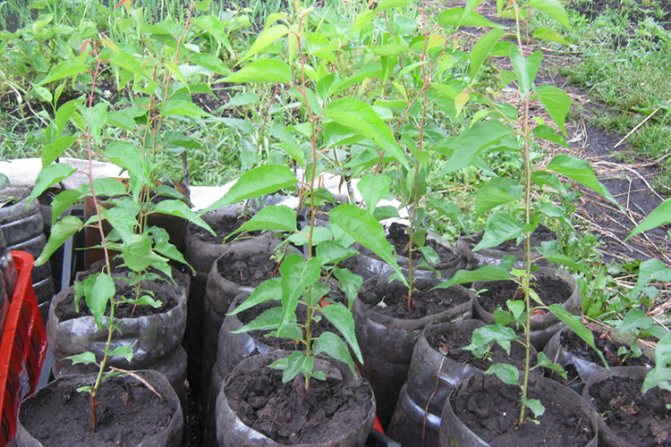

It is necessary to store the seedlings before planting, keeping the roots in a solution of clay and mullein, then wrap them in wet burlap or rags, close the top with a film. The gardener will need to regularly check the condition of the roots, they should not dry out.
The tree must be left before disembarkation in the basement or any other room where the air temperature will be from 0C to + 5C. In the southern latitudes, seedlings are dropped on the site in autumn, in which case they will need to be insulated with straw and protected from rodents.
Preparing for landing
Triumph of the North is rooted in the open field in spring, when the risk of return frosts will be minimal. Depending on the region, works can be carried out from April to mid-May. It is important to wait for the moment when the earth warms up to + 5C.
Until the planned date of work, the seedling should be kept in the basement so that the plant does not wake up ahead of time. In rare cases, rooting is carried out in the fall - in October.
A well-lit and wind-protected area is best suited for planting. You can root the apricot in a place where there will be some kind of fence on the north side. It can be a structure, a fence, or another tall tree.
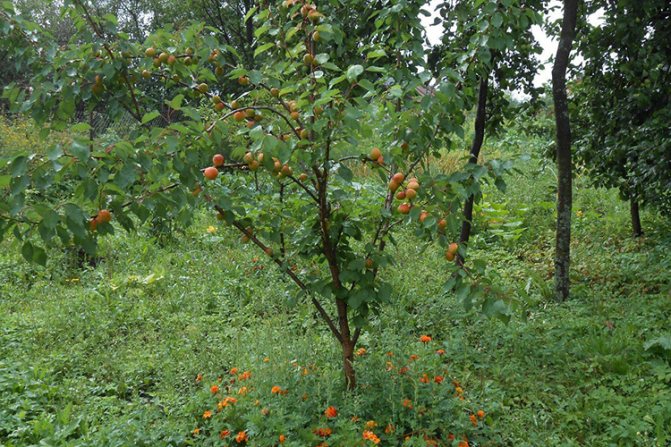

But it should be borne in mind that the variety belongs to individualistic plants, therefore it is better for it to allocate a separate place in the garden without other fruit crops, the exception will be the group planting of different types of apricot.
It is more correct to root young seedlings in a neutral or slightly alkaline soil, with an acidity of 6-7 pH. The soil in the garden should be light and loose to maintain good aeration and moisture access to the roots when watering. The optimal groundwater level will be 1.5-2 m.
Rooting algorithm
The best option would be to root the seedlings on specially made hills, which will prevent the root system from rotting.
In this case, instead of a planting hole for a tree, a hill is made of a substrate, which includes sand, garden soil, compost and humus.
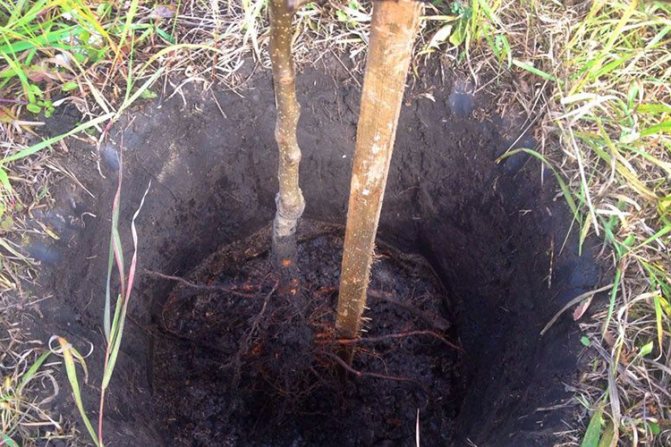

Landing technology:
- from the soil mixture, an elevation is made with a height of 50 cm, with a diameter of 100 cm;
- a depression is formed at the top, 1/3 of the length of the root system;
- the substrate is well moisturized;
- the seedling is placed in the center, the roots are straightened, sprinkled with soil to the root collar;
- the embankment is leveled so that there is a gentle descent from the trunk;
- tie the planting material to the support;
- form a near-trunk circle, carry out watering and mulching;
- branches are pruned by 5-10 cm, but subject to the presence of no more than 2 buds on each.
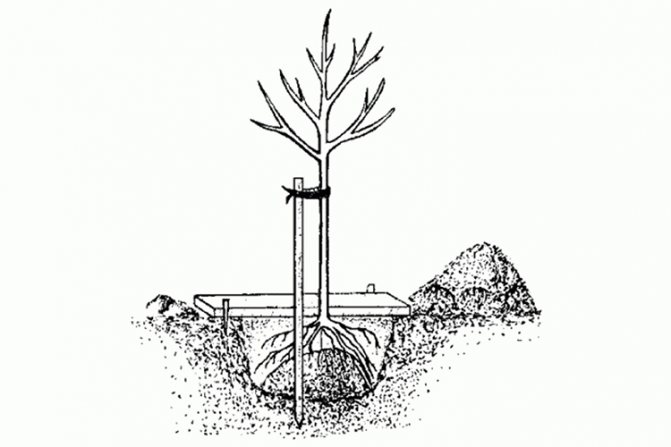

For group planting, trees should be placed in 4-5 m increments.
Care
The Northern Triumph inherited unpretentiousness in terms of agricultural technology from the mother plants, so the measures for caring for it will be reduced to performing simple garden work.
Watering
The hybrid belongs to drought-resistant varieties, in light of which it will not need frequent watering. With regular natural precipitation, additional moisture is not required for an adult tree. In a dry summer, watering is carried out once a month - in the spring after the flowering phase, during the period of fruit growth, after harvesting. After each introduction of moisture, loosening of the trunk circle will be required to improve aeration and moisture access to the roots.
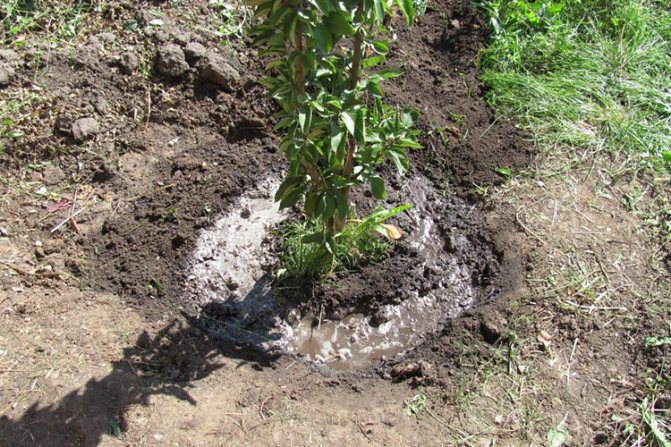

A young seedling should be watered regularly, the frequency of work will depend on the condition of the soil in the near-trunk circle - the ground near the root system should not dry out.
Top dressing
After planting, fertilizers will be required for a tree for 4 years, when a crop will already be formed on it. For feeding, organic matter is used - humus or compost every 3-4 years. Every spring, the apricot is watered with mineral compounds; in the fall, superphosphate is introduced into the trunk circle.
Pruning
The yield of the fruit crop will depend on the correct formation of the crown. A hybrid will require sanitary and anti-aging pruning. In the first case, dry and damaged branches are removed in the spring, the length of healthy branches is reduced by a third. A rejuvenating haircut will be required when fruiting decreases in the fall.
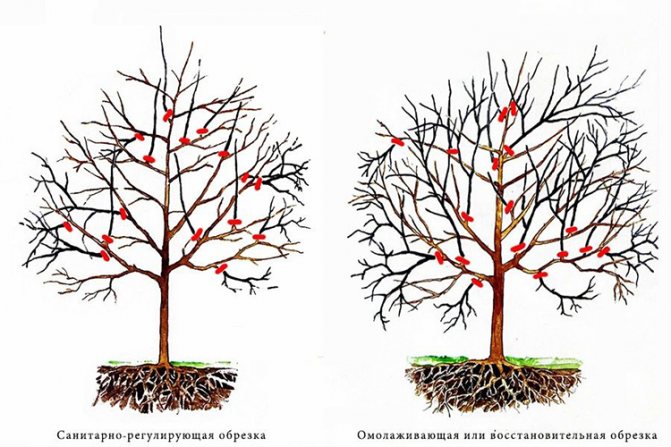

Preparing for winter
In autumn, the trunk and skeletal branches must be whitewashed with lime. To protect against rodents and freezing, young seedlings are covered entirely, constructing special frames made of agrofibre or other covering material with ventilation holes.
In adult trees, the trunks are tied with twine for the winter, additionally wrapped with spruce branches. The trunk circle is mulched with straw or sawdust, the layer thickness should be at least 15-20 cm.
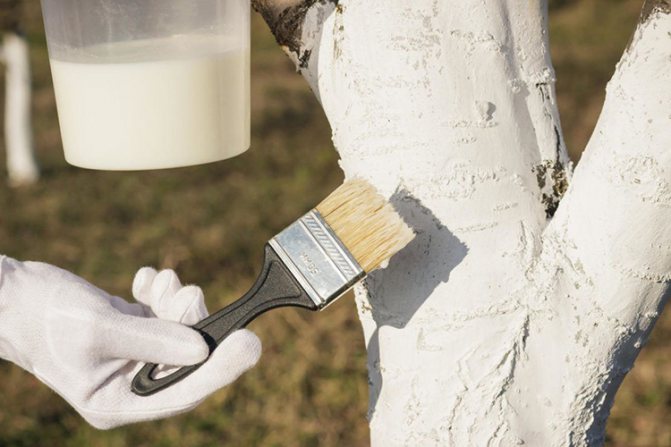

Table: how, when and how to feed the apricot?
| Fertilizer | Period | number |
| Nitrogen fertilizers (urea) | Before flowering, after flowering, after the ovaries have fallen off | 35 g per 1 m2 |
| Potash fertilizers (potash nitrate) | After ripening apricots | 50 g per 1 m2 |
| Phosphate fertilizers (superphosphate) | Before flowering, after flowering | 60 g per 1 m2 |
| Organic | 1 time in 2 years (early spring or late autumn) |
|
It should be borne in mind that apricot needs both mineral and organic fertilizers.
Harvesting and storage
The fruits are removed from the branches by hand in dry weather. It is best to carry out harvesting work in the morning or evening hours. For storage and transportation, it is recommended to use wooden or plastic containers, re-layer the layers with paper.
The optimal storage temperature will be + 10C. With a decrease in the mark to 0C, the crop can be kept fresh for about 1.5 months. Berries are suitable for fresh consumption, as well as for subsequent heat treatment and drying.
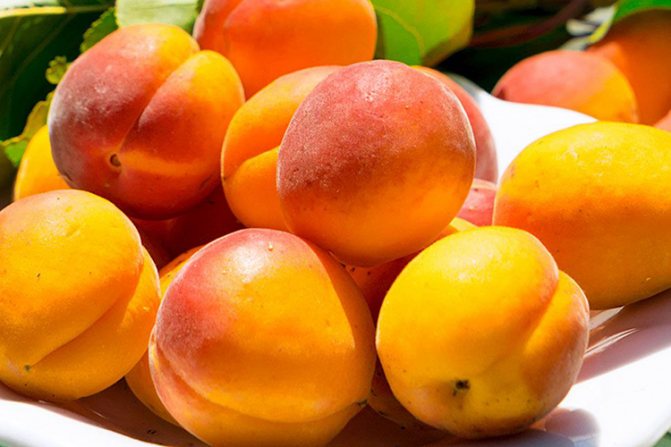

Advantages and disadvantages of the variety
- Among the advantages of the variety over competitors it is noted:
- high frost resistance and resistance to temperature extremes;
- early maturity;
- large fruits ripen in a short summer;
- self-pollination;
- wonderful dessert taste;
- ripe fruits do not crumble.
- The disadvantages of the variety are:
- irregular fruiting;
- the possibility of freezing of flower buds;
- harvesting is difficult due to the high height of the tree.
Diseases and pests
The hybrid is resistant to most diseases. In rare cases, the apricot can be affected by the following ailments.
- Moniliosis is a fungal disease that can be carried by bees. Fungicides are used for treatment.
- Klesterosporiosis is a perforated spot caused by high humidity. It will be possible to cure the tree by processing with universal compounds that combine insecticidal and fungicidal properties, for example. "Nitrafen".
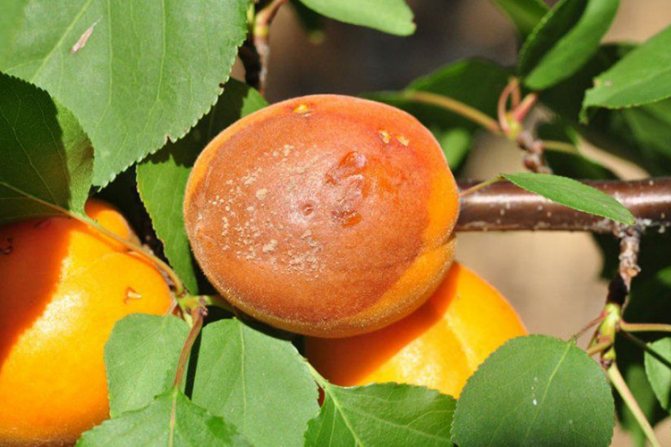

Moniliosis
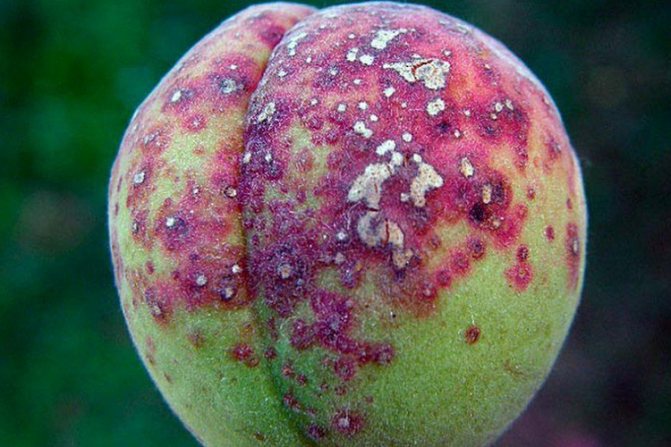

Clesterosporiosis
Sometimes the hybrid can be attacked by insect pests. They will become dangerous for him.
- Khrushchev are beetle larvae that feed on plant roots. The fight against them is carried out with chemical preparations based on diazinon, by introducing it into the ground.
- Weevils are insects that winter in the bark of a tree; in the spring they lay eggs, the larvae of which destroy plants. For pest control, treatment with "Entobacterin" demonstrates high efficiency.
- Aphids - a sign of the presence of a pest will be dried foliage. Insects are destroyed by spraying the aboveground part with soapy water.
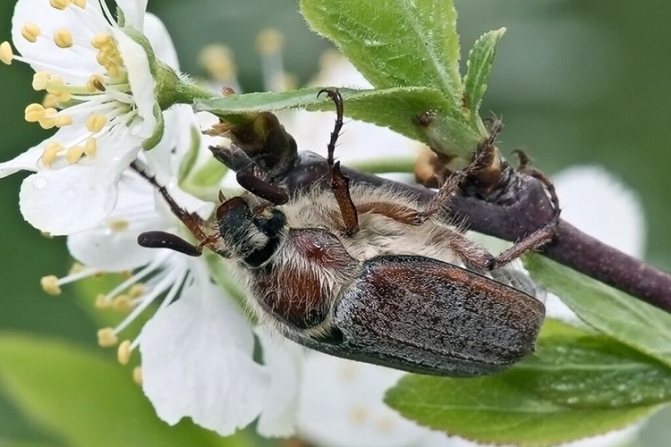

Khrushch
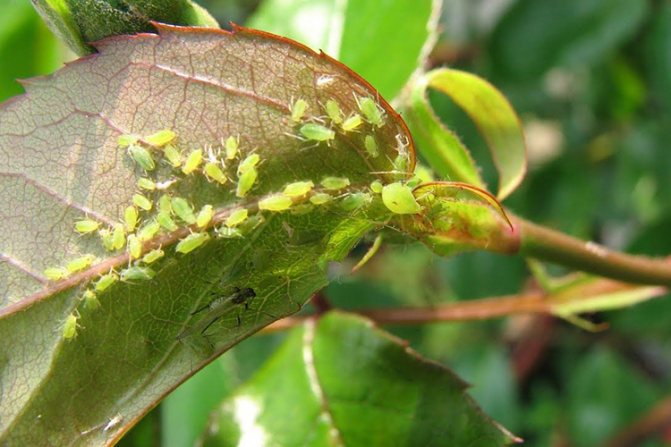

Aphid
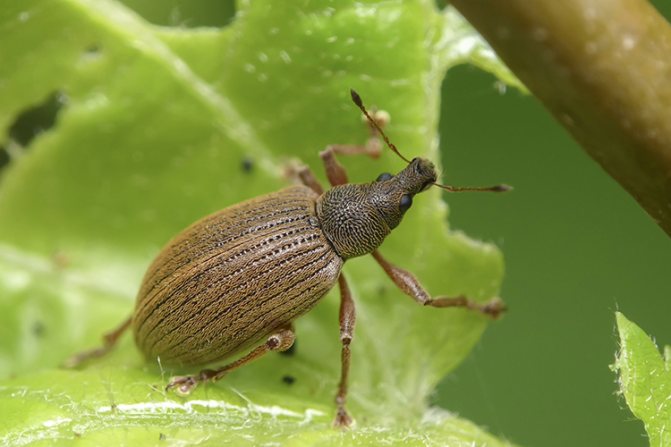

Weevil
Fight disease
The Northern Triumph is resistant to many diseases of fruit trees, but some of the diseases still threaten him.
Table: variety-specific problems and methods of dealing with them
| Disease | How does it manifest | What to do? |
| Moniliosis | Fruits are covered with brown rot spots and gray dots - concentrations of fungal spores. | Prevention: weeding, removal of fallen leaves, whitewashing of trunks. Control measures: spraying with a solution of 100 g of copper sulfate, 100 g of lime per 10 liters of water. Spraying with Horus (according to the instructions) 3-4 times - before flowering and then at weekly intervals. |
| Cytosporosis | Rapid dying off of parts of branches and shoots of a tree. Brown spots on the leaves. Cracks in the bark. | Removal of damaged parts of the plant. Spraying with Bordeaux liquid or copper oxychloride until leaves appear in spring. |
| Verticillosis | Leaves at the bottom of the tree turn yellow. | Burning affected branches. Spraying with Bordeaux liquid in spring, as well as in autumn during leaf fall. |
| Clasterosporium disease | Spots appear on the leaves, which are then transformed into holes. Cracks on the shoots. | Spraying in early spring with Bordeaux liquid and copper sulfate (3 liters per tree). |
| Insects-pests (aphids, moth, caterpillars of the hawthorn butterfly) | Visible insects that feed on the sap of leaves, shoots, causing them to dry out. | Mechanical removal of pests from a tree. Spraying with a 3% solution of Bordeaux liquid. Spraying with Entobacterin (according to the instructions). |
Planting nasturtium around the perimeter of the trunk circle will prevent aphids from attacking the apricot.
Photo gallery: diseases of the Northern Triumph
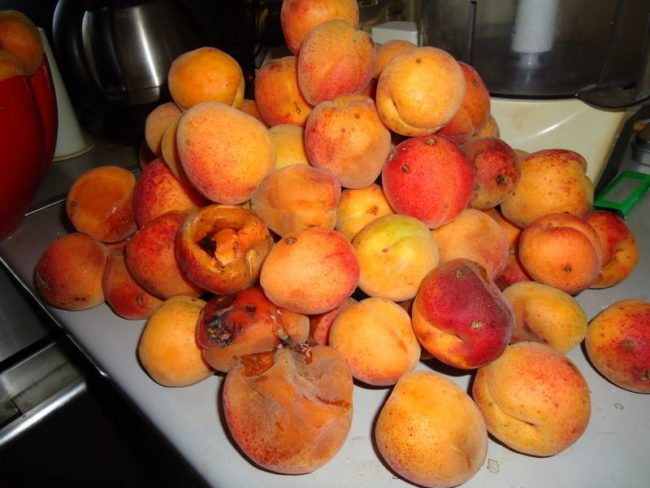

Moniliosis quickly passes from diseased fetuses to healthy ones
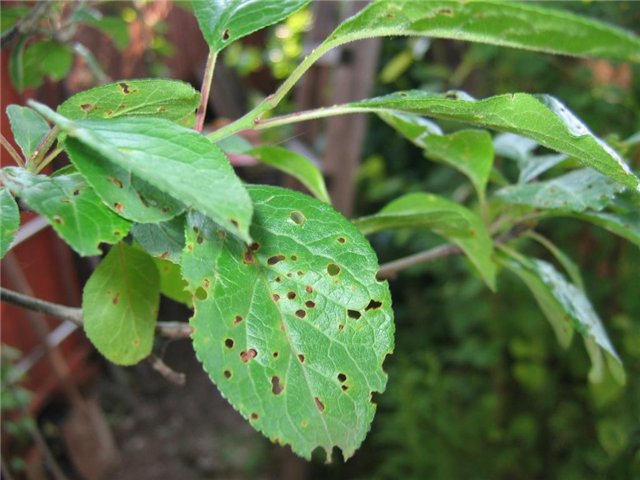

With clotterosporia, holes appear on the leaves
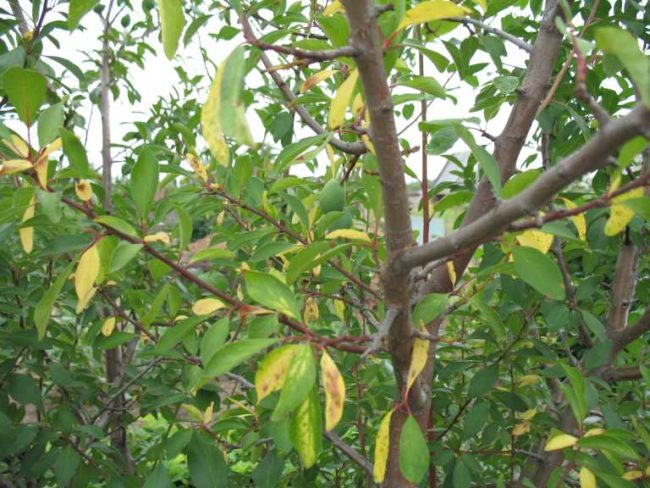

With verticillium leaves turn yellow
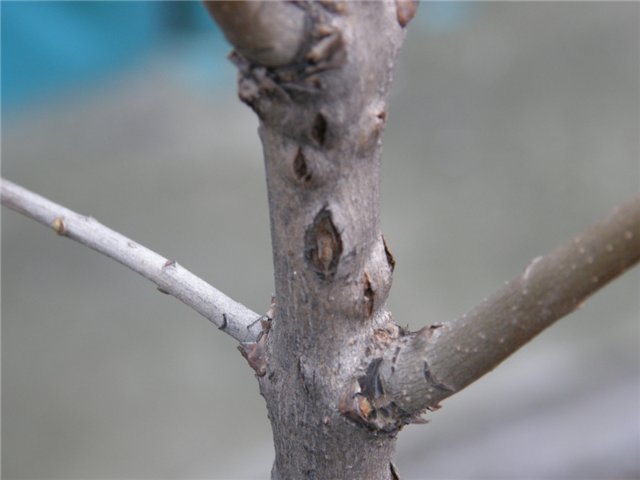

One of the signs of cytosporosis is the affected tree bark
Reproduction
Northern apricot Triumph can not only be purchased, but also grown independently. There are several breeding methods.
Cuttings
Green shoots for planting are harvested in spring, kept in a growth stimulant and rooted in the garden. During the first month, it will be necessary to regularly moisten the soil, in 2-3 weeks they will begin to form fibrous roots. After a year, the young seedling can be transplanted to a permanent place.
Budding
In late July-early August, cuttings with a bud, 2-3 cm long, must be cut from a young branch, and soaked in water.Choose a healthy fruit crop for the scion in the garden, clean the soil at the trunk, make budding at a distance of 5 cm from the ground. For the winter, the grafted kidneys are wrapped in paper. In the spring, part of the rootstock above the graft is removed, the covering material is removed.
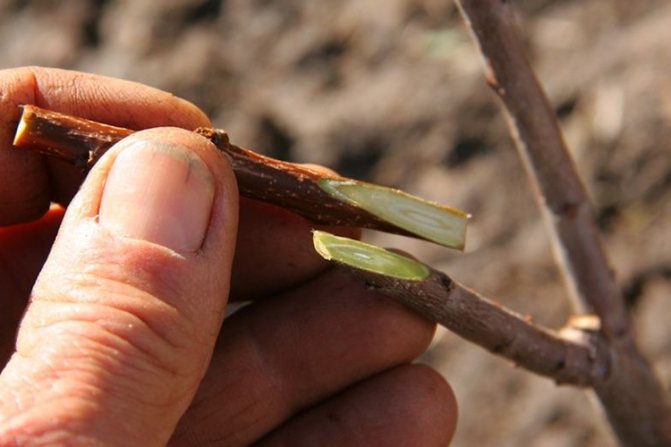

Watering features
In order for the tree to develop well, it needs to be watered generously throughout the spring and June-July. The best way is to pour water into a shallow groove dug around the perimeter of the crown. At a time, about 20-30 liters of water are consumed per 1 m2 of plot for a young tree and up to 40-50 liters for an adult. By August, watering is reduced or stopped altogether (otherwise, young branches begin to actively grow, which will not have time to get stronger by the winter cold).
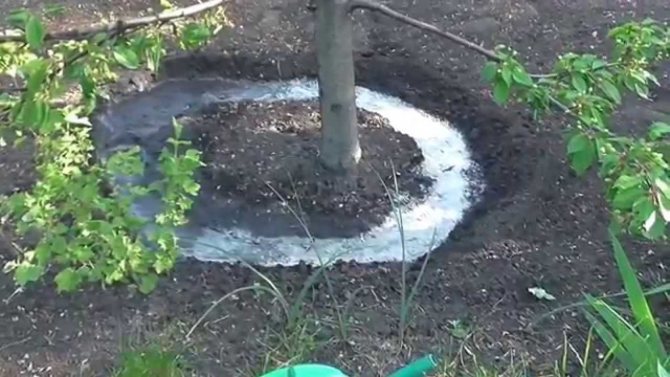

A shallow ditch is dug around the tree for watering.
Testimonials
Veronica, Volgograd: An excellent variety for our region. The winter hardiness indicated in the description is confirmed in practice - the apricot survived frosts down to -35C, bloomed for 3 years already.
Vitaly, Odintsovo: I grow the Northern Triumph in the Moscow region, the mass of fruits is about 40 g, when sheltered for the winter, it develops and bears fruit.
Oksana Nikolaevna, Voronezh: I bought a seedling in a nursery, for 3 years I was able to collect 6 kg of medium, but very tasty fruits. Apricots are ideal for jam and compotes.

